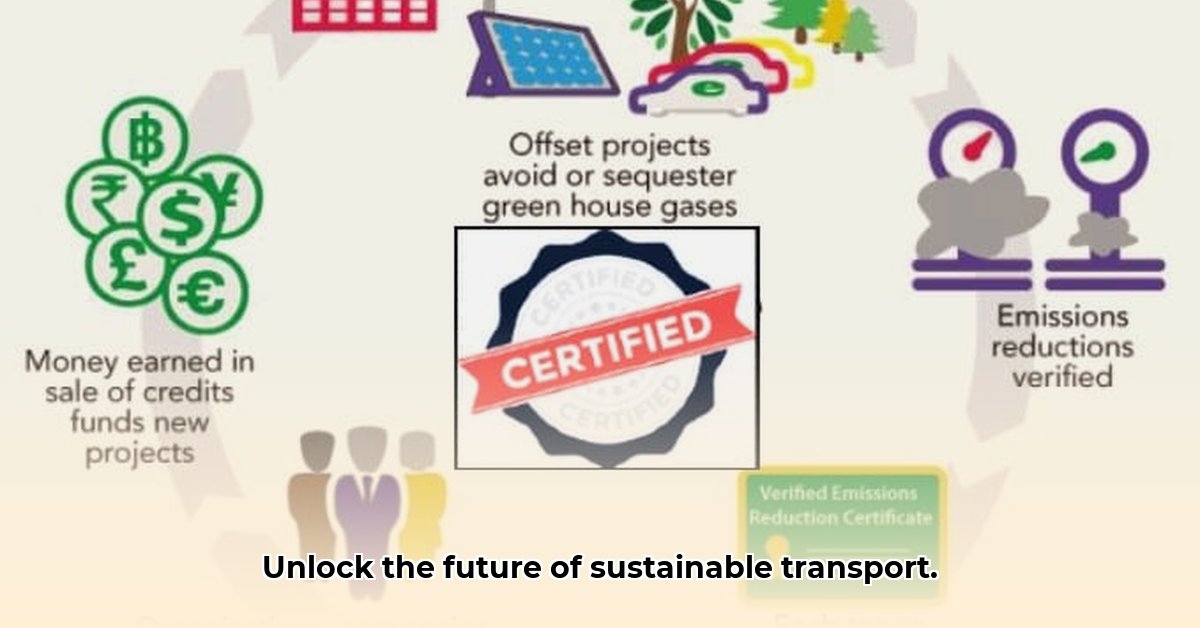
Sustainable Transportation Carbon Credits: A Crucial Tool for Decarbonization
The transportation sector is a major contributor to global greenhouse gas emissions. Decarbonizing this sector is critical to mitigating climate change, and carbon credits offer a powerful market-based mechanism to achieve this. This article explores the role of sustainable transportation carbon credits, focusing on their application within Low Carbon Fuel Standards (LCFS) programs, highlighting both their successes and limitations. We will examine various stakeholder roles and responsibilities, identifying crucial policy implications and future directions for effective implementation. For more on sustainable energy solutions, check out Lola Motion Energy.
What are Carbon Credits in Transportation?
Carbon credits represent verifiable reductions in greenhouse gas (GHG) emissions. In the context of transportation, they incentivize the adoption of cleaner fuels and technologies. Companies that reduce their emissions below a set target earn credits, which can be sold to other companies that haven't met their targets. This creates a financial incentive for greener practices. A prominent example of this system in action is the Low Carbon Fuel Standard (LCFS). But how exactly are these credits generated and traded?
How LCFS Programs Work (and Their Limitations)
LCFS programs, like California's pioneering initiative, employ a cap-and-trade system. Fuel producers and importers must meet increasingly stringent carbon intensity (CI) standards, representing the grams of CO2 emitted per unit of energy. Those exceeding the standard earn credits, while those falling short must purchase them. This market-based mechanism fosters innovation and the deployment of low-carbon fuels.
However, challenges persist. Accurate CI calculations are critical but complex, potentially leading to inaccuracies and market manipulation. Robust verification processes are essential to maintain the program's integrity. Furthermore, the effectiveness of LCFS programs can vary geographically due to differences in implementation and regulatory frameworks. Aren't consistent, reliable data crucial for the success of these programs?
Alternative Mobility and its Integration with Carbon Credits
The rise of alternative transportation options – electric vehicles (EVs), bike-sharing programs (like Tembici), public transit, and biofuels – significantly contributes to emission reductions. These alternatives generate carbon credits by demonstrating a verifiable reduction in emissions compared to traditional gasoline-powered vehicles. The challenge, however, lies in accurately measuring the emissions avoided by these alternatives and translating those reductions into tradable credits. This requires sophisticated methodologies and data collection strategies. How can we effectively quantify the carbon reduction impacts of these diverse modes of transportation?
Policy Implications and Future Directions
Effective government policy is paramount for a successful carbon credit system. Clear, consistent regulations across jurisdictions are crucial for creating a stable, predictable market and fostering investment in clean technologies. Improved data transparency and robust market oversight are essential to prevent manipulation and maintain public trust. Furthermore, integrated policies that combine carbon credits with other climate initiatives can maximize their impact. Consider the impact of harmonized regulations across different states or countries – would this not significantly enhance the efficacy of carbon credit programs?
Stakeholder Perspectives and Responsibilities
The successful implementation of sustainable transportation carbon credits requires the coordinated efforts of multiple stakeholders:
- Governments: Establish and enforce LCFS programs, ensure market integrity, and support research and development in low-carbon technologies.
- Fuel Producers/Importers: Invest in low-carbon fuel technologies, meet CI standards, and participate actively in the credit market.
- Technology Developers: Advance the development and commercialization of low-carbon technologies, such as improving fuel efficiency and reducing lifecycle emissions.
- Consumers: Make conscious choices to use public transit, cycle, walk, or drive more fuel-efficient vehicles.
Challenges and Opportunities: Navigating the Path Forward
Scaling up low-carbon fuel production, ensuring equitable access to sustainable transportation options, and improving data accuracy remain significant challenges. Addressing market volatility and preventing manipulation are critical considerations. However, the LCFS approach offers substantial opportunities for technological innovation, economic growth, and environmental sustainability. How can we effectively address these challenges and maximize the potential benefits of carbon credit programs?
Actionable Steps Towards Decarbonization
The following table provides actionable steps for various stakeholders to accelerate decarbonization efforts:
| Stakeholder | Actionable Step | Timeframe |
|---|---|---|
| Governments | Strengthen and expand carbon credit programs; invest in robust monitoring and verification systems. | Short-term (0-1 year) |
| Implement nationwide programs; integrate with other climate policies. | Long-term (3-5 years) | |
| Fuel Producers/Importers | Invest in low-carbon fuel technologies; optimize production processes. | Short-term (0-1 year) |
| Diversify fuel sources; build sustainable supply chains. | Long-term (3-5 years) | |
| Transportation Companies | Transition to electric vehicle fleets; improve fuel efficiency; utilize carbon offsetting. | Short-term & Long-term |
| Consumers | Choose public transport, cycling, walking; reduce car usage. | Short-term & Long-term |
Conclusion: A Collective Effort for a Sustainable Future
The effective utilization of carbon credits within a robust LCFS framework is essential for decarbonizing the transportation sector. While challenges remain, the potential benefits – technological innovation, economic growth, and environmental protection – are undeniable. A collaborative effort involving governments, industry, and consumers is crucial to realize the full potential of carbon credits as a powerful tool for creating a cleaner, more sustainable transportation future.